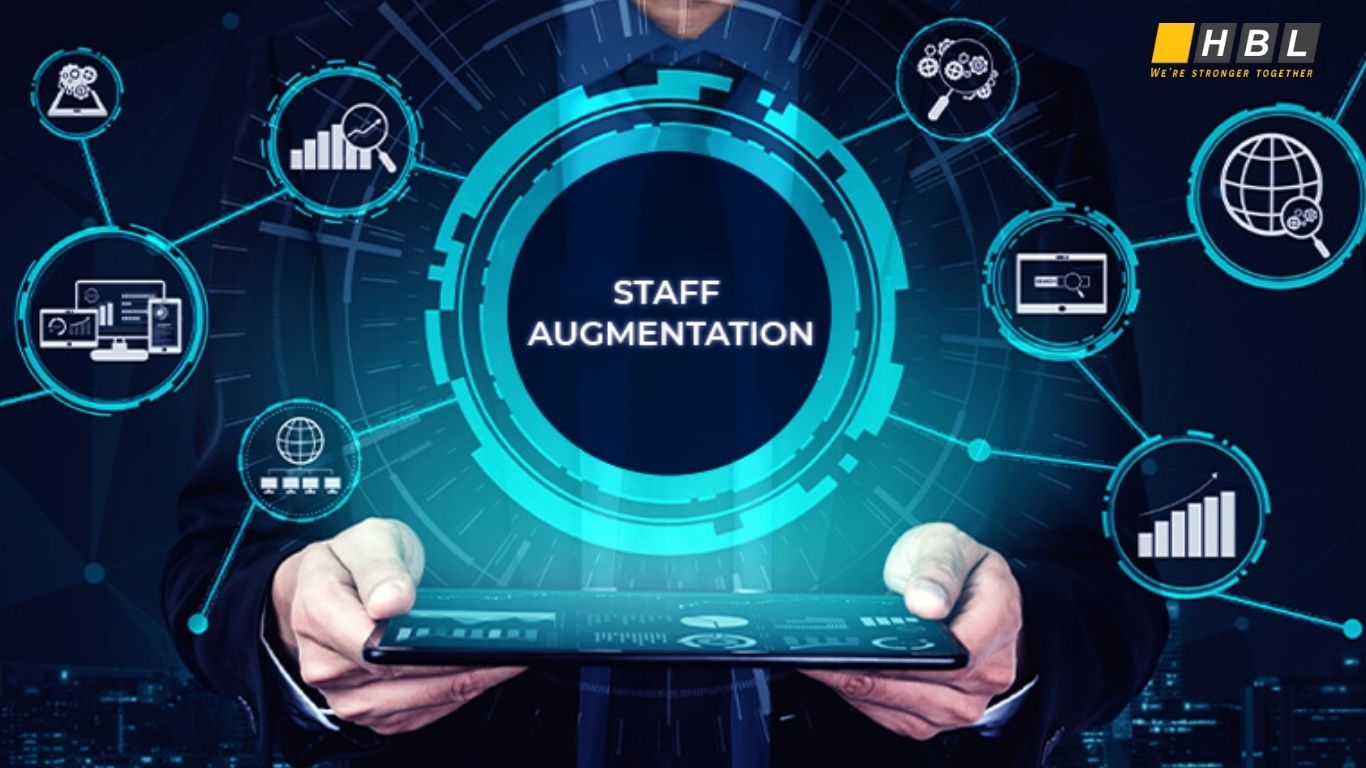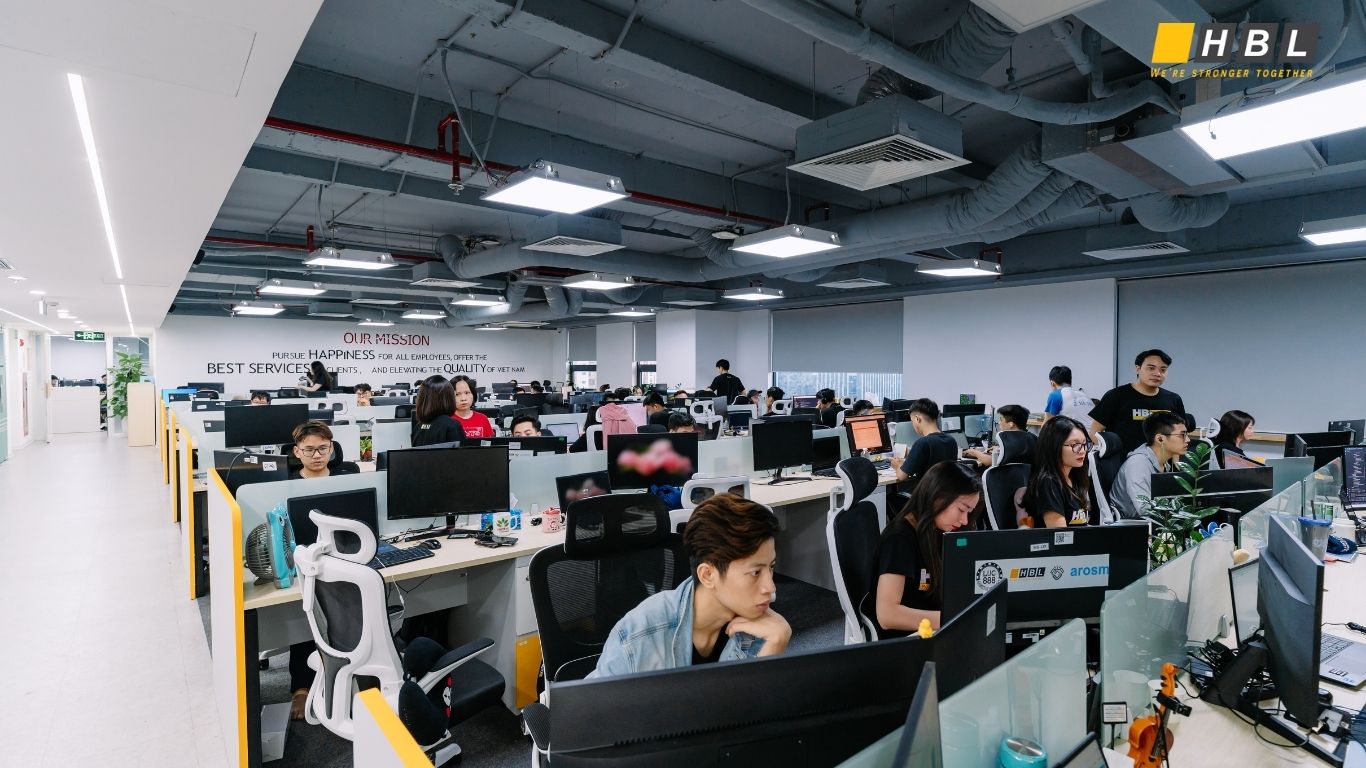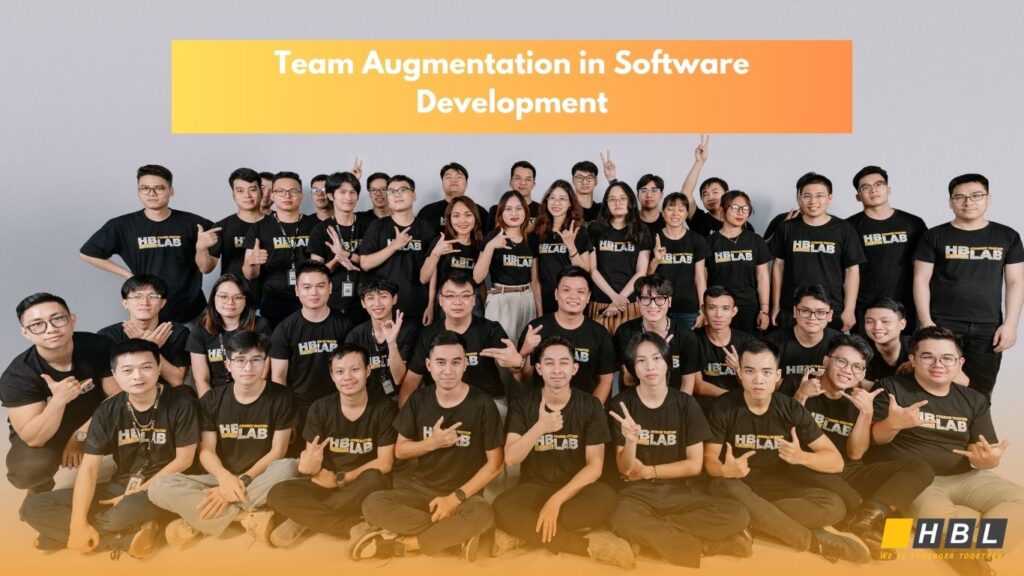As software demands grow more complex and businesses push for faster innovation, traditional hiring models often fail to keep pace. Team augmentation has emerged as a strategic solution, enabling companies to scale their development teams quickly, access specialized talent, and remain agile in a competitive landscape.
In this guide, we’ll explore how team augmentation works—particularly in the IT sector—and why it’s becoming a go-to model for modern software development.
What is Team Augmentation?
Team augmentation is an outsourcing strategy where businesses temporarily add external professionals to their in-house teams to meet project demands, bridge skill gaps, or accelerate development cycles. Unlike project-based outsourcing, where a vendor handles the work independently, augmented staff integrate directly with your internal team, working under your processes and management.

Key Characteristics of Staff Augmentation:
- Flexible scaling: Add or reduce team size based on project needs.
- Targeted expertise acquisition: Seamlessly onboard professionals with specialized technical skills exactly when they’re needed..
- Cost efficiency: Avoid long recruitment cycles and overhead of full-time hiring.
- Cultural fit and collaboration: Ensure smooth team integration while retaining full oversight of project workflows and communication.
This model is particularly useful for companies that want to retain project ownership but need external expertise or manpower temporarily.
IT Team Augmentation: Meeting the Dynamic Needs
The fast-evolving nature of software development requires teams that can adapt quickly, scale efficiently, and bring in the right expertise at the right time. IT staff augmentation offers several strategic advantages that help companies meet these challenges:
✅ Faster Time-to-Market
Hiring full-time employees can take weeks—or even months—due to recruitment, interviews, onboarding, and training. Staff augmentation bypasses these delays by providing access to a pool of ready-to-deploy IT professionals. This allows companies to speed up development timelines, deliver features faster, and respond swiftly to market demands.
✅ Access to Global Tech Talent
With IT team augmentation, companies are no longer limited by their local talent pool. You can source skilled professionals from different regions or countries, often with lower labor costs and high technical proficiency. This is especially valuable when you need niche expertise (e.g., cloud architects, blockchain developers, or AI engineers) that may be scarce in your area.

✅ Flexibility and Scalability
Augmented teams can be easily scaled up or down based on project scope, budget, or development phases. This level of flexibility helps optimize resource allocation, reduce idle capacity, and avoid the risks of overstaffing or understaffing.
✅ Specialized Skill Sets On-Demand
Projects often require short-term access to specific technical skills—such as migrating to microservices, integrating third-party APIs, or deploying DevOps pipelines. Staff augmentation enables organizations to access specialized talent for specific tasks without the obligation of permanent employment.
✅ Cost Efficiency
By augmenting your team instead of hiring full-time employees, you save on costs related to recruitment, onboarding, benefits, and long-term salaries. Additionally, outsourcing to offshore or nearshore teams can significantly reduce hourly rates without compromising on quality.
✅ Improved Focus and Control
Unlike fully outsourced models, augmented staff work under your internal processes, tools, and management. This ensures better alignment with your company culture, higher collaboration, and full control over the development lifecycle.
Staff Augmentation vs. Managed Services: A Comprehensive Comparison
When organizations need to extend their capabilities in IT or software development, two common outsourcing models come into play: staff augmentation and managed services. While both involve leveraging external expertise, they differ significantly in structure, control, and use cases. The following comparison will guide you in selecting the model that best fits your business objectives.

Key Differences Between Team Augmentation and Managed Services
| Feature | Team Augmentation | Managed Services |
| Definition | Adding external professionals to your in-house team who work under your supervision and processes. | Outsourcing an entire service or function to a third-party provider responsible for end-to-end delivery. |
| Team Control | Client manages the augmented staff directly. | Vendor manages the service and its delivery. |
| Responsibility | The client owns the project outcomes. | The vendor is accountable for results based on agreed KPIs. |
| Flexibility | High flexibility in scaling resources. | Limited flexibility; changes may require contract adjustments. |
| Integration | Augmented staff work within the client’s existing team. | Vendor operates as an external, independent team. |
| Ideal Use Case | Temporary skill gaps, additional development capacity. | Continuous service delivery, end-to-end product development, or comprehensive IT assistance. |
| Speed of Implementation | Faster to integrate individual contributors. | Takes more time to define scope and set up contracts. |
| Cost Structure | Based on hourly/daily rates of individual contributors. | Based on service-level pricing (often fixed or tiered). |
✅ When to Choose Each Model
Choose Staff Augmentation if:
- You want full control over the project and team.
- An internal team is already in place, but additional support is required to enhance its capacity.
- Your need is short-term or project-specific.
- You need to fill specific technical skill gaps quickly.
Choose Managed Services if:
- You want to outsource the responsibility for a complete function or system.
- You prefer a results-driven contract with clear SLAs.
- You lack in-house expertise to manage or deliver the service
Key Scenarios: When to Use Staff Augmentation
Staff augmentation is most effective when applied in the right business contexts. Below are common scenarios where this model brings clear strategic value:
🔹 1. Filling Specialized Skill Gaps
An organization may lack in-house expertise in specific technologies (e.g., AI, mobile development, cybersecurity) and require external professionals to bridge those gaps efficiently.
🔹 2. Meeting Tight Project Deadlines
In cases where internal resources are insufficient to meet urgent timelines, staff augmentation helps accelerate development and avoid costly delays.
🔹 3. Short-Term or Project-Based Needs
For limited-duration initiatives or one-time projects, augmented staff provide the necessary capacity without the burden of long-term employment.
🔹 4. Supporting Overloaded Internal Teams
When existing teams are operating at full capacity, augmentation helps maintain productivity and quality without increasing pressure on core staff.
🔹 5. Managing Budget Constraints
Hiring full-time employees can be costly. Staff augmentation offers a flexible, cost-efficient alternative for managing workforce needs within budget.
🔹 6. Retaining Operational Control
For organizations that want to maintain control over workflows, tools, and internal processes, staff augmentation allows seamless integration with existing teams.
🔹 7. Exploring New Markets or Technologies
When entering unfamiliar markets or adopting new technologies, partnering with skilled external professionals accelerates progress and minimizes risk.
Key Factors to Consider When Augmenting Your Software Development Team
Augmenting a software development team is a strategic decision that requires meticulous evaluation across multiple dimensions to ensure alignment with business goals and project success. Below are critical factors that organizations should carefully assess before and during the augmentation process:
1. Comprehensive Definition of Project Scope and Skill Requirements
A thorough understanding of the project’s objectives, scope, timelines, and technical requirements forms the foundation for effective augmentation. This includes identifying not only the technical skills needed (e.g., programming languages, frameworks, tools) but also the level of experience required (junior, mid-level, senior). Without precise requirements, there is a risk of onboarding resources who cannot meet the project demands, leading to inefficiencies and delays.
2. Cultural Compatibility and Communication Alignment
Successful integration of augmented resources depends heavily on their ability to mesh with the existing team’s culture and communication norms. Differences in working styles, time zones, language proficiency, and cultural expectations can create friction or misunderstandings. Assessing these factors upfront, and providing cross-cultural training or communication protocols, helps foster collaboration, trust, and a cohesive working environment.
3. Technical Proficiency and Industry Domain Expertise
While technical competence is fundamental, augmented professionals with prior experience in the relevant industry domain or business context add significant value. Domain knowledge accelerates understanding of business processes, compliance requirements, and user expectations, reducing ramp-up time and improving quality. For example, software development for healthcare or finance sectors requires familiarity with regulatory standards that generic IT professionals might lack.
4. Scalability and Flexibility of Augmentation Arrangements
Projects often evolve due to shifting business priorities, market conditions, or technical challenges. The augmentation model should accommodate such changes by allowing the team size and composition to scale seamlessly. Contracts and service agreements must clearly define how scaling up or down will be managed, including notice periods, onboarding/offboarding processes, and impact on costs, to maintain agility and cost efficiency.
5. Security, Compliance, and Intellectual Property Safeguards
Engaging external professionals necessitates stringent controls around data security, confidentiality, and intellectual property (IP) protection. Organizations should insist on robust contractual clauses, including non-disclosure agreements (NDAs), data handling protocols, and compliance with relevant standards (e.g., GDPR, HIPAA). Ensuring that the augmentation partner follows best practices in cybersecurity reduces risks of data breaches or IP theft.
6. Structured Onboarding and Integration Strategy
An effective onboarding process is vital to minimize downtime and integrate augmented staff smoothly. This involves providing clear documentation, access to tools and environments, introductions to key team members, and alignment on workflows and coding standards. Continuous mentorship and feedback loops help accelerated learning and foster accountability.
7. Vendor Evaluation: Reputation, Experience, and Support Capabilities
Selecting the right staff augmentation partner is critical. Evaluations should include the vendor’s track record in delivering skilled talent, their recruitment and vetting processes, and their ability to provide ongoing support (e.g., replacement guarantees, performance management). Transparent communication channels and responsiveness are also crucial for addressing issues promptly.
8. Cost-Benefit Analysis Beyond Hourly Rates
While cost considerations often drive augmentation decisions, focusing solely on hourly rates can be misleading. A comprehensive assessment includes productivity, quality of output, speed of delivery, and potential hidden costs (e.g., rework, training, communication overhead). Investing in higher-quality talent may lead to faster, more reliable delivery and better long-term ROI.

9. Legal and Contractual Clarity
Clearly defined contracts outlining scope, deliverables, service levels, payment terms, liability, and exit conditions protect both parties. Legal clarity prevents disputes and ensures mutual understanding of expectations and responsibilities throughout the engagement.
10. Performance Monitoring and Feedback Mechanisms
Establishing key performance indicators (KPIs) and regular review meetings facilitates ongoing assessment of augmented staff performance and project progress. This allows for timely adjustments, continuous improvement, and ensures the augmented team consistently meets quality and delivery standards.
By giving due consideration to these factors, organizations can maximize the benefits of team augmentation, mitigate associated risks, and create a seamless extension of their software development capabilities.
Guideline: Choosing the Right IT Team Augmentation Service Provider
Selecting an IT team augmentation partner is a critical step that impacts the success of development projects, operational agility, and long-term scalability. This guideline outlines a structured approach to evaluating and selecting the most suitable provider for your organization’s needs.
1. Define Requirements Clearly
- Scope: Identify the specific roles, skills, and expertise required (Eg:frontend, backend, DevOps, QA,…).
- Duration: Clarify whether the engagement is short-term, long-term, or project-based.
- Workload & Schedule: Specify time zone preferences, working hours, and collaboration tools.
- Goal: Establish a solid foundation for aligning expectations and measuring fit.
2. Assess the Provider’s Technical Competency
- Review the provider’s domain expertise, industry experience, and supported technologies.
- Examine sample profiles or case studies relevant to your technology stack.
- Confirm the ability to support Agile, CI/CD, or other development methodologies used internally.
Goal: Ensure the provider can deliver technically competent resources that match your stack.
3. Evaluate Talent Acquisition and Screening Processes
- Ask about their recruitment workflow: sourcing, interviews, technical assessments, background checks.
- Determine if candidates are pre-vetted and tested before client presentation.
- Prefer providers with an internal bench of engineers ready for rapid deployment.
Goal: Guarantee a high standard of talent quality and reduce time-to-onboard.
4. Examine Communication and Collaboration Compatibility
- Assess communication tools, processes, and time zone overlap.
- Ensure proficiency in the working language (e.g., English, Japanese).
- Inquire about cultural onboarding or team integration support.
Goal: Promote seamless collaboration between augmented and internal teams.
5. Review Legal, Security, and IP Protections
- Confirm the use of NDAs, IP ownership agreements, and compliance with data protection regulations (e.g., GDPR, HIPAA).
- Ensure secure infrastructure and policies for remote work and access control.
Goal: Protect your intellectual property and mitigate security risks.
6. Understand Pricing and Engagement Flexibility
- Review hourly or monthly rates by seniority level and region.
- Clarify terms related to billing cycles, contract minimums, replacements, or scale-up/down flexibility.
- Watch for hidden costs (e.g., onboarding, tool licenses, management fees).
Goal: Achieve cost transparency and contractual clarity.
7. Evaluate Support and Resource Management
- Ask if account managers, delivery leads, or technical coordinators are assigned.
- Ensure regular performance evaluations and feedback loops are included.
- Clarify support mechanisms in case of performance issues or early roll-off.
Goal: Ensure ongoing success beyond initial onboarding.
8. Align on Long-Term Partnership Potential
- Evaluate the provider’s ability to support future needs, such as expanding team size, adding new skill sets, or supporting strategic initiatives.
- Assess cultural alignment, scalability, and commitment to quality over time.
Goal: Build a sustainable, strategic partnership—not just a transactional arrangement.
Note: Choose the partner that offers not only technical excellence, but also operational transparency, cultural fit, and scalability for long-term collaboration.
HBLAB – Trusted Partner in IT Team Augmentation
In an era where agility, speed, and scalability are vital to successful software development, HBLAB stands out as a trusted partner in IT team augmentation—delivering high-quality tech talent tailored to each client’s unique needs.

With proven technical capabilities, a rigorous talent screening process, and seamless integration into existing teams, HBLAB enables organizations to:
- Accelerate development without compromising quality
- Access highly skilled IT professionals across various technologies and industries
- Optimize operational costs through flexible engagement models
- Maintain full control over workflows, tools, and product delivery
- Ensure security and protect intellectual property with enterprise-grade safeguards
From fast-growing startups to large-scale enterprises, HBLAB has been a reliable extension of internal development teams—helping businesses scale faster, innovate smarter, and deliver better.
👉 HBLAB – Your trusted extension in software development.
Read more:
– Build Operate Transfer in IT: 5 Bold Advantages for Outsourcing
– Managed IT Services in Vietnam: A Comprehensive Guide for Global Businesses




